Global high-mix volume high-speed Shenzhen PCBA manufacturer

Ru
9:00 -18:00, Mon. - Fri. (GMT+8)
9:00 -12:00, Sat. (GMT+8)
(Except Chinese public holidays)





Global high-mix volume high-speed Shenzhen PCBA manufacturer

Ru
9:00 -18:00, Mon. - Fri. (GMT+8)
9:00 -12:00, Sat. (GMT+8)
(Except Chinese public holidays)





HomePage > Blog > Knowledge Base > SMD (Surface-Mount Device) Components - The Backbone of SMT PCB Assembly
The new world of electronics makes life more accessible, and all products are becoming smaller. The products are increasingly performing the tasks faster and more efficiently. Due to SMD, which stands for Surface-mounted device, there is a possibility of miniaturization of electronics. SMD components are mounted on the surface of printed circuit boards (PCBs), and the process is termed SMT. The SMD component takes on the role of being the fundamental support of the SMT (Surface-Mount technology). You can take goods with this newest technology, for instance, Smartphones, computers, or even industrial products/manufacturing equipment.
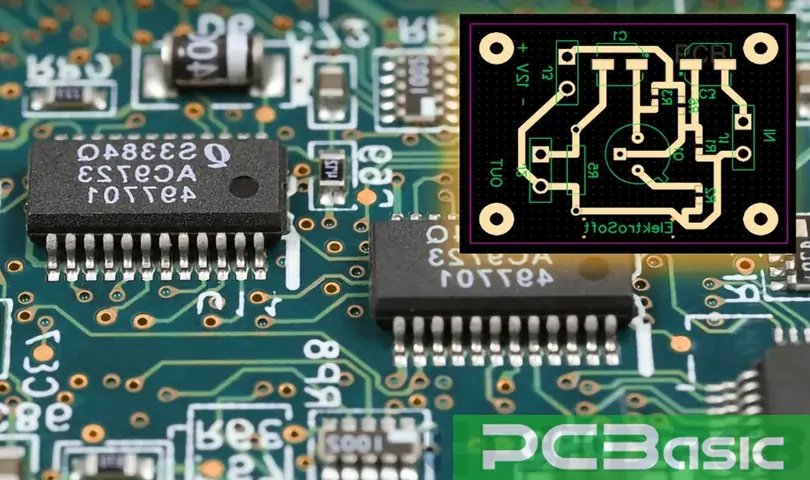
This article will tell you about the world of SMD components, what SMD components are, their importance, typical parts identification, and how to solder SMD components. At the end of this guide, you will understand why SMD components are so crucial for the electronics industry and their impact on the development of devices for everyday use.
SMD components are small electronic devices directly attached to a PCB's surface, unlike traditional components with long leads that go through holes in the board. There are numerous SMD parts on the market, including resistors, diodes, transistors, capacitors, and integrated circuits. Most of them are technically applied in PCB circuits, have their own features, and play specific roles on the board. And they are soldered on top of the PCBs through SMT. SMT (surface mount technology) has many advantages, and many electronic devices are done through SMT in the contemporary world.
As we discussed, electronic devices are continuously shrinking in size, and SMD components are more powerful and used in versatile electronic devices. They help to fill this need by soldering more parts into a smaller board size, having become the core of modern electronics technology. These devices are not only smaller but also more effective and reliable.
Here's a detailed analysis of the advantages of SMD components that will help you understand why SMD components are so popular.
1. Smaller Size, More Precision, and Compact Designs
Precision and compact designs in small sizes are the most significant advantages of SMD components. Through-hole components with long leads that pass through the PCB need ample space to make a complete circuit. While SMD parts are significantly smaller in size, they can be directly mounted onto the PCB without drilling. Hence, more components can be soldered into the board to make devices more compact and lighter.
This technology can be understood by using the example of a modern smartphone. You can see inside a highly complex and unique circuit board full of hundreds or thousands of SMD components. The smartphone would have to be much larger if prepared with the traditional large-size components. SMD technology enables these components to fit closely together to produce slim sizes.
2. Faster and More Efficient Production
Earlier, all the components were soldered manually onto the PCB in the construction of the electronic devices, a process that was quite time-consuming and tiresome. Manufacturing becomes faster with the use of SMD components. SMD components are placed through machines. These machines pick the components and place them on the PCB quickly and accurately. These machines help to make the production process faster and can put thousands of SMD parts in an hour. There is no need to drill holes in the PCB to assemble SMD components, reducing production time and costs.
3. Better Performance in High-Frequency Circuits
SMD components drive better electrical performance in high-frequency circuits than traditional components. Traditional components will exploit the extra length of the leads, which introduces parasitic inductance and capacitance that interferes with operations of circuits. If leads are required, they should be short or, in some cases, non-existent, and this is where SMD components are less problematic. Thus, SMD components are superior, particularly at high speed and high frequency. More efficiency is essential in modern electronics when the devices are called upon to process large data within a limited time. So, they are necessary for today's manufacturing, including smartphones, computers, communication devices, and others.
4. Cost Savings in Manufacturing
SMD components can be more expensive than traditional components, but the savings are much greater in the manufacturing. Because SMD used less material in the PCB assembly than in the through-hole process. Large-scale production in industries creates a big cost difference. Manufacturers benefit from making quality and reliable components in large quantities at a lower cost and in a short time. Then, SMD components have become the standard in today's electronics market.
5. Greater Reliability
It has come to the point that SMD components are being deployed nearly anywhere; why? It's simple – reliability. For example, resistance is mainly used in portable devices for stress, such as vibrations or impacts. Besides, there are many elements placed near one another. Such an arrangement assists in avoiding troubles and any interferences in such a multitude of tightly compacted circuits. This reliability is quickly felt when device performance is required over long intervals, such as in the medical sector, car assembly industries, and manufacturing industries.
We've described the benefits of SMD components above. This section will further detail the different kinds of SMD components in the market, how to identify or differentiate them, and how to compare them according to packages.
SMD components have different types, each performing a specific function in an electronic circuit. Here are the most common types you will find:
• Resistors: This type of component helps to control the voltage of electricity in a circuit and the flow of electrical current. They come in various resistances based on the needs and size of the given circuit.
• Capacitors: Capacitors are organized to hold and provide electrical energy. They are applied in the process of soldering PCB for filtering, supply power, and signal conversion.
• Diodes: Diodes are used for protection, rectification of AC to DC, and signal modulation circuits. Diodes allow current flow only in one particular direction. In this respect, they can be classified into various kinds based on power. Diodes are used in power supplies, signal demodulating circuits, LED lighting, etc.
• Transistors: Transistors are semiconductor devices that are mainly used for amplification and switching. They are used in all types of circuits, ranging from simple circuits to highly integrated systems. SMD transistors are more efficient and smaller.
• Integrated Circuits (ICs): ICs might be the most complex SMD components, which contain millions of transistors, resistors, capacitors, and other components within a piece. They are incorporated within Microcontrollers to Processors and memory chips and also exist in separate Voltage Regulators.
Each of these components plays a crucial role in the overall function of an electronic device. Understanding them is important for someone working in electronics design or repair business.
Identifying SMD components can be difficult due to their small size and the limited stock available for markings. However, understanding them is very important for proper assembly and troubleshooting.
Here is a SMD components identification chart:
|
Components Type |
Package Type |
Code/Marking |
Description |
Example |
|
Resistors
|
0603,0805,1206 |
3 or 4 digits |
Numeric code indicating resistance value in ohms (e.g., 103 = 10kΩ) |
0805: 103 (10kΩ) |
|
Capacitors
|
0603,0805,1206 |
Usually none |
Often identified by color: brown/black for ceramic, yellow/orange for tantalum |
0805: Brown (ceramic) |
|
Diodes
|
SOD-123, SOD-323, SOT-23 |
Line/Bar marking |
The line or bar denotes the cathode (negative) end |
SOD-123: Line marking |
|
Transistors
|
SOT-23, SOT-223 |
Alphanumeric code |
Code often starts with a letter followed by numbers indicating transistor type |
SOT-23: M6 (NPN) |
|
Integrated Circuits (ICs)
|
SOIC, QFP, BGA |
Part number |
A part number indicating the IC's function and specs |
SOIC: 74HC00 (NAND gate) |
|
Inductors
|
0603, 0805, 1206 |
Alphanumeric code |
Code indicating inductance value (e.g., 100 = 10µH) |
0805: 100 (10µH) |
|
LEDs
|
PLCC, 0805, 1206 |
Color indication |
Often identified by package color, different colors indicate different wavelengths. |
PLCC: Green |
The term SMD package deals with the size and form of an SMD component. The package type is quite significant because it defines how the component will be fitted into the PCB and how it interacts with other components.
Here are some common SMD package types:
SOIC (Small Outline Integrated Circuit): This package is commonly used in integrated circuits and has a rectangular shape with leads or pins on the sides. The SOIC package comes in several width/pin combinations.
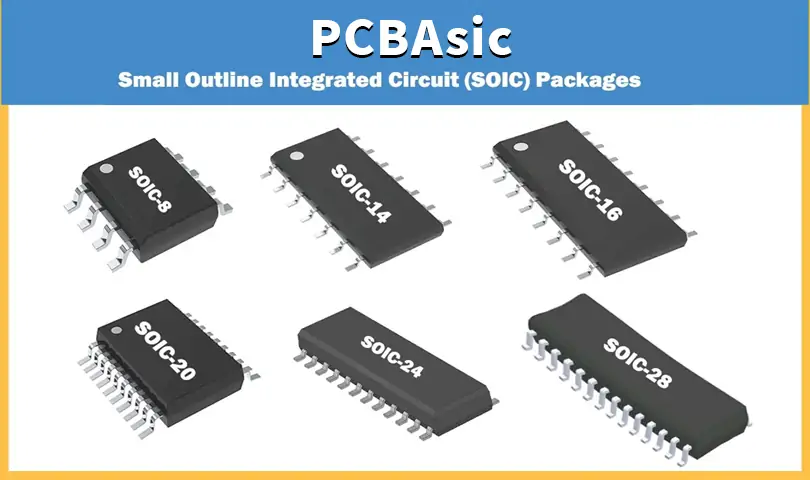
QFP (Quad Flat Package): QFPs have leads on all four sides and are used for those ICs that need large connections. They are incorporated into microcontrollers and processors.
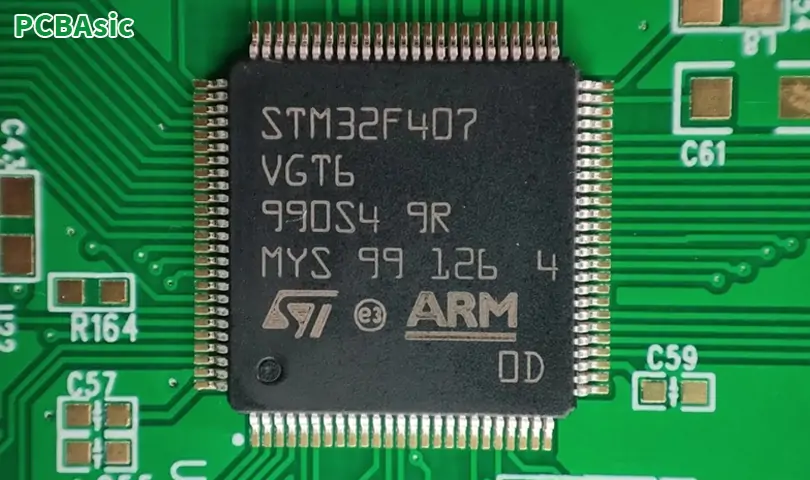
BGA (Ball Grid Array): BGA packages are applied high-density and functional ICs such as processors. They have a grid of solder balls on one side of this chip carrier. These solder balls are used to connect this chip to the PCB.
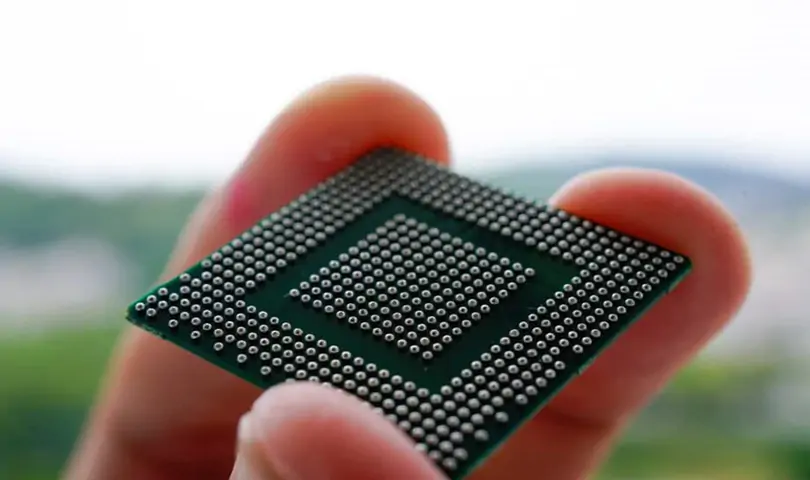
SOT (Small Outline Transistor): SOTs are primarily employed to define the region of transistors and mutually similar elements. SOTs come in various sizes and shapes and may accept three or more leads. They are usually used in power control circuits.
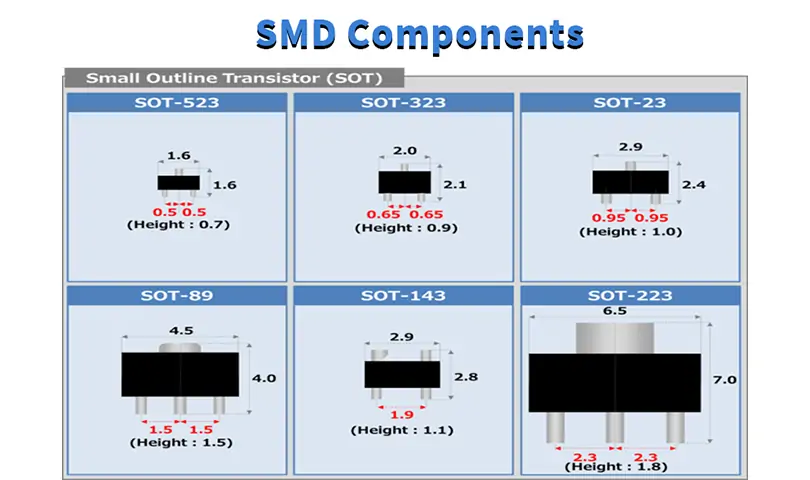
Each package is used for a specific purpose, and the choice of the package depends on the specific requirements of the circuit design.
Check is a very important aspect of manufacturing and repairing the components. Some faulty parts will cause the device to be non-functional. You can check SMD parts through the following procedures:
Visual inspection is the initial stage of examining SMD components. It is used to check for any visible signs such as cracks, fading, or any part that is missing. Large parts can be done with the naked eye without any microscope, but you will need hand lenses or microscopes to inspect small parts.
A multimeter is a tool by which resistance, capacitance, and continuity tests upon SMD may be carried out on SMD. Depending on the type of SMD components, the method of using a multimeter can be different for each type.

Here's how you can use a multimeter for different types of components:
• Resistors: Rotate the dial to set the multimeter to ohms and place the two probes by the two ends of the resistor. Reading is marked on the resistor, which can vary for different types of resistors.
• Capacitors: When testing capacitors, check the capacitance of the capacitor, which is written on the capacitor. Place the probes at the two end capacitor terminals and compare the readout with the capacitance of the capacitor. Small SMD capacitors cannot checked through this method. Small SMD capacitors require an auto-ranging digital capacitance meter.
• Diodes: Diodes have two ends named as anode and cathode. The anode is positively charged, and the cathode is negatively charged. Set the red probe to the anode side terminal and the black cathode to the cathode side terminal. Note that voltage (normally from 0. 6V to 0. 7V for a silicon diode) must be indicated in one direction while there is no indication in the other direction.
Automated optical inspection (AOI) is used for deep inspection at large-scale production. AOI systems are used for PCB scanning and analysis of any flaw in the components or solder joints with the help of cameras and sophisticated software. AOI is used at places where the naked eye cannot find it.
X-ray inspection is used to examine internally the connections and solder joints. X-ray machines can scan hidden features and flaws in the connections. An X-ray can visually disclose internal features of strength or potential areas of compromise within the components of a system without interfering with those components.
Towards the end of all the testing that is carried out, there can be a requirement for functional checking of the assembled PCB. This means applying voltage across the circuit and evaluating if the circuit performs well and the device is functioning as required. These methods ensure that SMD components function in the right way.
Soldering iron for SDM components is quite an important aspect of this piece. Let's look at how to solder SMD components with a soldering iron.
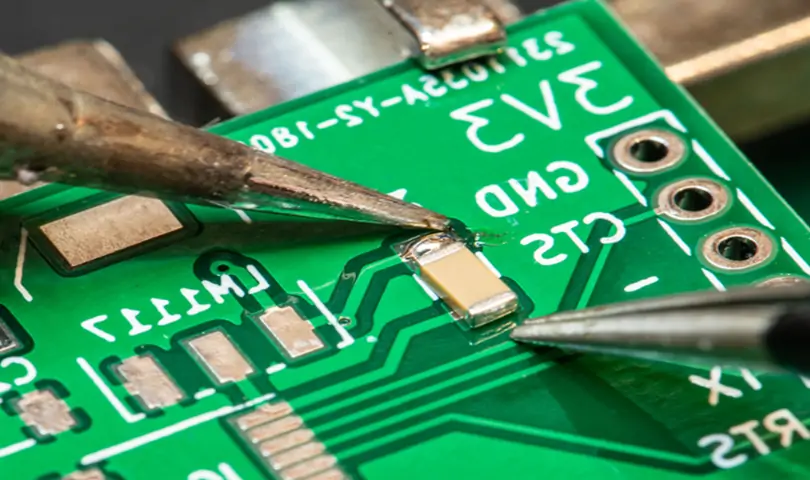
Soldering SMD components is a delicate process that is always done with the right tools and instruments. In large-scale production, numerous automated machines perform soldering. But usually, soldering is done manually for prototyping, repairs, or small-batch production.
Here is step by step guide for manual soldering iron for SMD components:
First, take a new PCB and apply solder paste to the pads. Solder paste helps in ensuring good soldering between the SMDs and the PCBs. It is a mixture of flux and solder elements.
This is how you should correctly place the SMD parts on the correct place of the PCB board using the tweezers. Ensure all the components are mounted onto their respective places, and then interconnectivity can be established appropriately.
Heat the component leads and the pads with a well-knob soldering iron. The solder paste will melt and create a strong relationship between the component and the PCB. Temperature should be limited; a temperature higher than the limit is bad for the components.
Leave it for some minutes until the joints are cold. Checked the circuit and joints are soldered. A magnifying glass or microscope will be in your hand at this point.
The last process is to clean the PCB to remove the residual flux, which can lead to corrosion of the layer if not cleaned. Cleaning is usually done with a soft brush together with isopropyl alcohol. Soldering of SMD components is a little tricky but can be done with the right tools and techniques.
If you want to mass-produce, the best PCBA manufacturer in China is PCBasic. You can click here: www.pcbasic.com for more information about PCBasic.
Small surface mount devices are the key to miniaturization and are fast and efficient electronic devices. Mastering these skills is important for anyone involved in electronics design, manufacturing, or repair. You can enhance your knowledge and skills, leading to better designs and more reliable electronic products.
Surface-mounted technology, or SMT, is a joining technology where the components are placed directly onto the PCB surface. It is different from through-hole technology. It has become the most popular technique in the electronics industry as it enables high-density circuits and automated assembly, which are heavily demanded in today’s electronic devices.
An SMT line is an assembly line intended to assemble printed circuit boards by installing surface-mounted device components. Its key stages include:
· Stencil Printer: Depicts the solder paste on the PCB through a stencil.
· Pick-and-place machine: this machine is an automated device used to assemble printed circuit boards (PCBs). Its primary function is to pick up surface-mount devices (SMD components) and accurately place them at specified locations on a PCB.
· Reflow Oven: Reflow soldering refers to the process of heating the solder paste that flows through it, melting it, and then cooling it to create a tighter connection between the SMD components and the PCB.
· Inspection Systems: Usually, the machine used is AOI. It is to search for defects like the rotated components or the poor solder connections.
· Rework Station: It is primarily used for repairing and reworking components on already assembled printed circuit boards (PCBs).
SMT lines provide a quick, precise, and automated means for manufacturing electronics and appliances that are applied in communication, automobiles, and industries.
SMD, also known as Surface-Mount Device, refers to tiny components that are mounted on the , such as resistors, capacitors, diodes, transistors, and integrated circuits.
SMT (Surface-Mount Technology) is a process or method used to place SMD components on the PCB. In the simplest terminology, SMD refers to the part, while SMT refers to the process of affixing and soldering that part on the PCB.
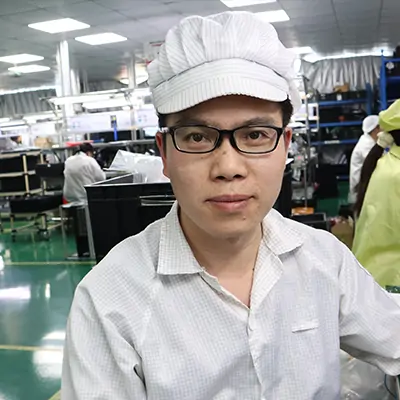
Assembly Enquiry
Instant Quote